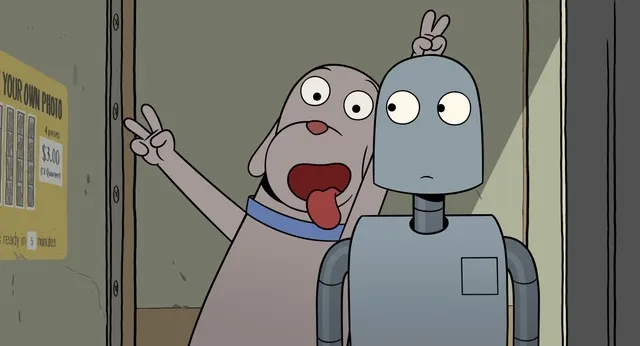
Pablo Berger On Visual Storytelling and Robot Dreams
Film Interviews
Communication is a key component of any good relationship. Whether it’s a passionate romance or a platonic friendship, the need to express yourself to the one who matters most to you is paramount. Spanish writer/director Pablo Berger believes that love and relationships are at the heart of his Academy Award nominated animated feature, Robot Dreams. What he doesn’t necessarily believe is that words are required in order to convey emotions, or to tell stories.
“My favorite period of cinema is the twenties,” Berger says. The silent era is sacred to Berger, particularly the groundbreaking works of European filmmakers such as Carl Theodor Dreyer and Victor Sjöström, which have heavily influenced his perception of film as an art form. “What makes cinema something unique is to write with images,” Berger says. In 2012, Berger’s first silent film, Blancanieves, a reimagining of Snow White, was met with rave reviews, but the director still felt that there was a lot left to explore in terms of telling stories without dialogue. Berger found himself irresistibly drawn to Robot Dreams, a 2007 graphic novel by Sara Varon. The story, set in a version of Manhattan populated by anthropomorphic animals in the 1980s, follows Dog, a lonely soul who yearns for companionship. Determined to break free from his solitude, Dog decides to order a kit and build a robotic companion. Dog and Robot quickly become soulmates, and as their bond deepens, a symphony of togetherness plays out against the backdrop of the city that never sleeps. When the two become separated on an outing at the beach, they must face the possibility that they may never be reunited. “It was the themes about friendship, relationships, the fragility of relationships, how memory helps to overcome loss,” Berger says of his instant love for Varon’s work. In addition, having studied film at New York University in the 1980s, Berger felt a personal connection to the material that he couldn’t shake. “I went to NYU, I studied for a masters in film and I lived there for 10 years,” Berger says. “And those are the 10 years that made me a filmmaker and also made me an adult.” The idea of adapting Robot Dreams into an animated feature soon became something of an obsession. The only problem was that Berger had no background in animation. “I was very scared at the beginning before I started the project, but I realized that what I had to do is make substitutions,” Berger says. “Instead of working with the cameraman, the art director, the wardrobe, hair and makeup, I had to work with an art department,” he explains..
The transition from directing live action to animation was not without its challenges, yet Berger found himself settling into it quickly. “If there’s one quality that a director of animation has to have, it’s patience,” Berger says. “And I’m a very patient life action director. I have made very few films. Every film that I made took five, six years to get made. So I think I had an animation director inside of me without even knowing it.” Where Blancanieves had intertitle cards for dialogue, in the tradition of the old black and white silent films, Robot Dreams doesn’t contain a single word, relying entirely on the rich visual world that Varon and Berger have created, and the expressive faces of the characters who inhabit it. “Some people think that a screenwriter writes dialogue,” Berger says, and it’s a notion that he strongly eschews. “For me, the cake is the story and the characters,” Berger explains. “The dialogue in the screenplay is the whipped cream, which is great. I love whipped cream. And, of course, there are some directors that are great dialogue writers, like Tarantino or Woody Allen. I’m not against dialogue, but what makes cinema a unique thing is this sort of storytelling.”
Robot Dreams has resonated deeply with audiences around the world since it first premiered at the 76th Cannes Film Festival in 2023, and Berger has delighted in seeing widely varying interpretations of the story. Where some see a buddy movie, others view the relationship between Dog and Robot as a romantic one. While Berger consciously chose to play the characters without clearly defined genders, many have latched onto Robot Dreams as a queer love story, and Berger is delighted by each unique analysis of his work. “When you make a film without dialogue like Robot Dreams, it’s a sensorial experience,” Berger says. “There’s more space for the audience to complete it. There’s more space for the audience to make substitutions, and the film doesn’t belong to the director—it belongs to the audience.”
However you choose to interpret Robot Dreams, the constant that remains is that it’s a heartfelt work of art made by a visionary and passionate storyteller. As the film finally moves into its theatrical release, audiences all across America are experiencing the highs and lows of love and loss right alongside Dog and Robot, and as each person finds a special meaning to the story inside themselves, for Pablo Berger, it is truly a dream come true.
